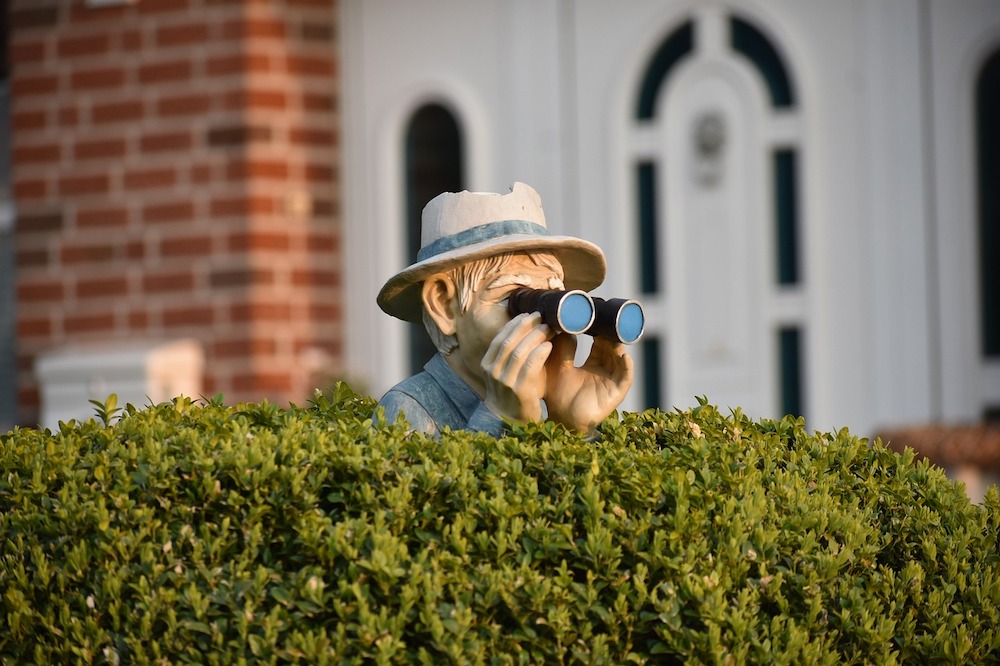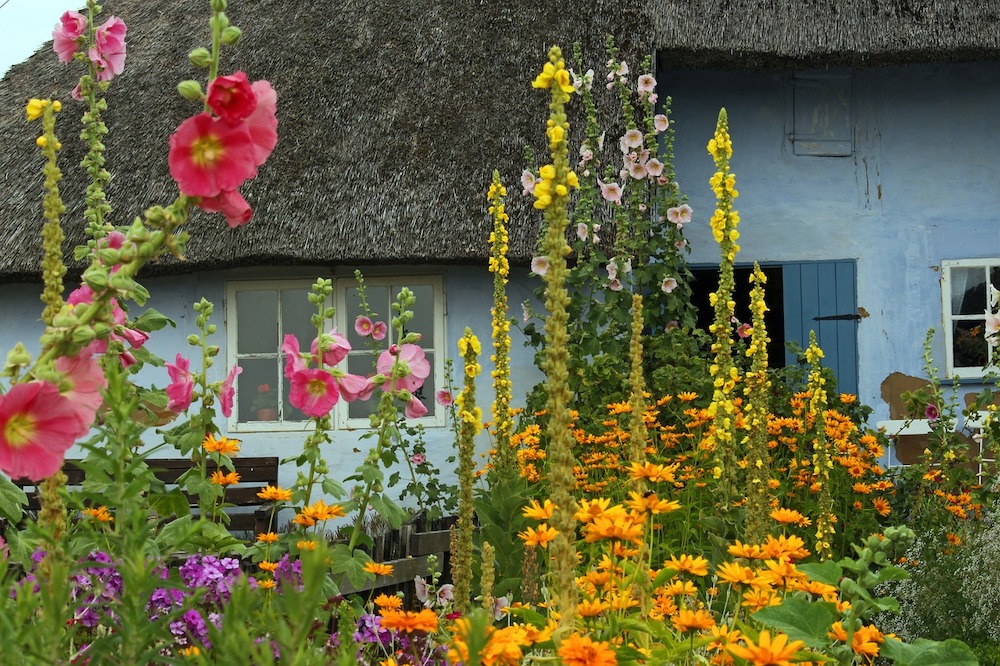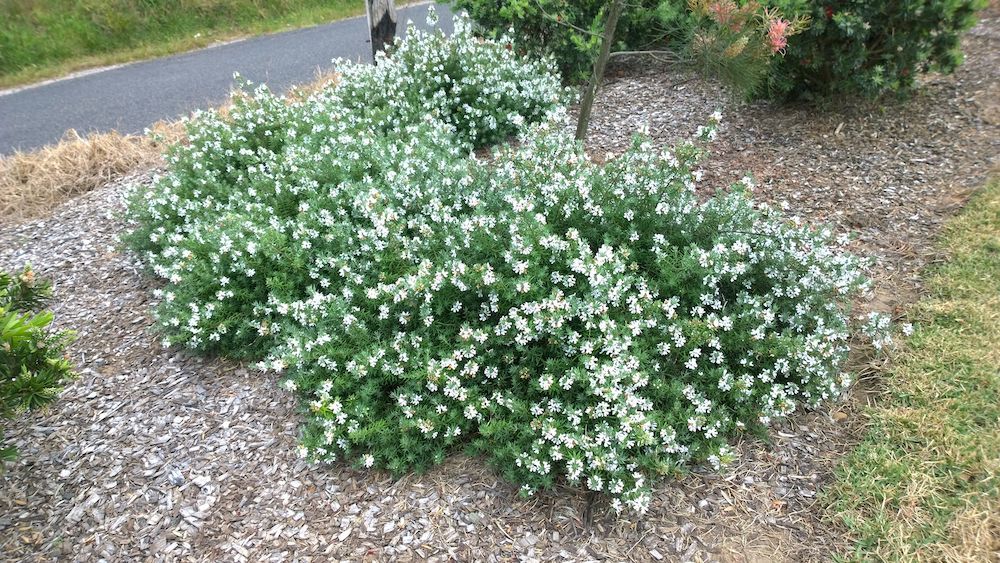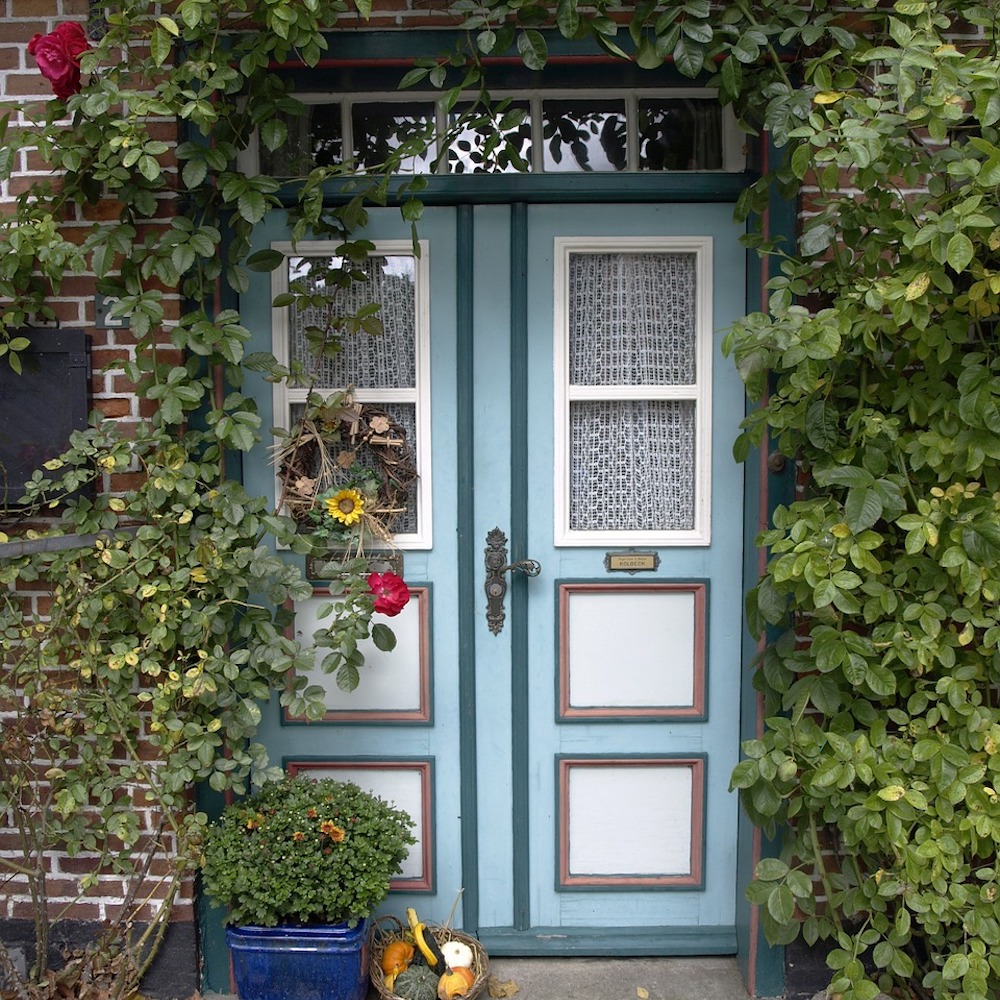Are you looking to add a vibrant splash of colour to your garden with the alluring charm of azaleas, but unsure about how to care for them?
How to Design a Front Yard Landscape that Boosts Curb Appeal
Creating a front yard landscape that boosts curb appeal is more than just a beautification project. It’s an investment in your home, enhancing its aesthetic appeal and potentially increasing its value.
This article will guide you through the key elements of designing a landscaped front yard that not only looks good but also complements your home’s architecture and suits your personal style.
- Understanding Your Front Yard’s Potential
- Planning Your Front Yard Landscape Design
- Design with Maintenance in Mind
- The Power of Colour in Landscape Design
- Texture: The Subtle Element of Design
- Shape: Structuring Your Landscape
- Focal Points and Pathways
- Plant Groupings
- Pest Control
- Personal Taste: Making Your Landscape Your Own
- Design Your Dream Front Yard!
- Daniel’s Wrap
Understanding Your Front Yard’s Potential
Before you start planning your new front yard landscape, it’s important to assess the current state of the space. Consider factors like soil type, sunlight exposure, and existing vegetation. These elements play a crucial role in determining what kinds of plants and features will thrive in the space.
Consider whether you’re simply enhancing the existing design, or whether you’re ripping up the old layout to create a completely new design.

Identifying the Soil Type
Knowing your soil type is crucial for plant selection. Different plants have different soil requirements and planting them in unsuitable soil can hinder their growth or even cause them to die. You can identify your soil type by looking at its colour, texture, and how it behaves when wet.
For instance, sandy soil is usually light in colour and feels gritty with soil particles large enough to see, while clay soil is darker and feels sticky when wet, with particles so small they’re invisible to the naked eye. Silt particles are sized somewhere between sand and clay, with a dust-like consistency.
Most soils have some combination of these three types of particle, with some organic material mixed in made of broken down plant and animal matter.
Assessing Sunlight Exposure
Understanding the sun’s path over your yard throughout the year is another important factor. Some plants need full sun to thrive, while others prefer shade.
A northern-facing slope will get more sun than a southern-facing slope in Australia, because the equator is to the north of the southern hemisphere. In summer, the sun is closer to the southern hemisphere than it is in winter, so the direction and amount of sunlight in your front yard changes throughout the year.
By assessing the areas in your space that get the most sun and those that are shaded, you can choose plants that will thrive in those conditions. If you need to provide extra shade or increase sunlight, consider installing structures like pergolas or using tall plants and trees.
Alternatively, if you need to increase sunlight, call an arborist to trim tree branches or incorporate glass into your design to reflect extra light where it’s needed.
Planning Your Front Yard Landscape Design
Once you understand your front yard’s potential, you can start planning your landscape design. This involves deciding on the layout of your yard and choosing the right plants and features. It’s important to have a clear plan before you start constructing the landscape to ensure that all elements of your design work together harmoniously.
Consider elements like focal points, pathways, and plant groupings. Focal points draw the eye and create interest, pathways guide the viewer through the garden, and plant groupings create a sense of cohesion and balance.
By carefully considering these elements, you can create a front yard landscape that’s both beautiful and functional.
Consider the Architecture of Your House
The design of your front yard should complement the architecture of your house. For example, if you have a modern house, you might opt for a minimalist landscape with clean lines and geometric shapes.
On the other hand, a cottage-style house might look best with a lush garden filled with colourful flowers and rustic elements.

Think About Proportions
Balancing the proportions between your house, lawn, and plants can make a big difference in your yard’s appeal. Large trees or shrubs can overwhelm a small house, while a large house might dwarf tiny plants. Try to choose plants and features that balance well with the size of your house and front yard.
If you’ve only got the nature strip to work with, you’ll approach the design differently than if you’ve got a large front yard with a house set back on the property.
Use Hardscaping
Hardscaping refers to the non-living constructed elements of a landscape, such as walkways, patios, and retaining walls. These elements can add structure and visual interest to your front yard.
For an out-of-the-box idea, consider using unusual materials like recycled bricks or coloured concrete for your hardscaping.
Create a Clear Pathway
A well-defined pathway not only makes your home more welcoming but also directs the eye towards your house. You can make your pathway stand out by lining it with vibrant flowers or interesting lighting fixtures.
Alternatively, winding pathways with hidden spaces can be a delightful way to enter a property. Large shrubs and pendulous tree leaves can shield the view from the street, making a private space for you and your guests to enjoy.
Incorporate Edging
Edging can give your garden beds a clean, polished look. There are many materials you can use for edging, including stone, metal, and wood. For an unconventional twist, you could use recycled items like wine bottles or old tiles.
Invest in Fast-Growing Trees
Fast-growing trees can quickly add height and structure to your front yard. Just remember to water them regularly in the first year and fertilise them at the appropriate time for the specific varieties you’ve chosen.
Sometimes, smaller trees can grow to be large faster than medium-sized trees that have grown in pots their whole lives. Consult a qualified arborist or horticulturist for more specific information.
Add a Pop of Colour to Your Front Door
One easy way to make your yard stand out is to paint your front door a bright colour. This can draw the eye towards your house and make your front yard more memorable.
Having flowers or shrubbery at the front door is another way to add interest to your home’s entrance.

Design with Maintenance in Mind
When designing your front yard, it’s essential to consider how much effort you’re willing to put into maintaining it. A beautifully landscaped yard can quickly lose its appeal if not properly maintained.
Plan for Pruning
Regular pruning is necessary to keep your plants looking their best. Some plants require frequent pruning, while others can be left to grow naturally with early structural pruning and the occasional removal of dead wood.
Strappy plants like lomandras may rarely need thinning out or division over time, shrubs and hedges like westringias may need regular shaping and size control, and larger trees like eucalypts and maples often require professional arborists for safe and effective pruning.
It’s important to understand the pruning needs of each plant in your garden and plan for the amount of pruning you can maintain.
Irrigation
Effective watering is crucial for a healthy garden. Depending on the size of your front yard and the types of plants you have, you might need to install an irrigation system.
Consider factors like water efficiency and ease of use when choosing an irrigation system. Also make sure that plants requiring similar water needs are planted together, so that they all receive the amount of moisture they need.
Fertilising
Different plants have different nutrient requirements. Regular fertilising can help ensure that your plants have the nutrients they need to thrive. You’ll need to choose plants that have similar nutrient requirements to put in beds together.
Plants in the Proteaceae family like hakeas, grevilleas and banksias need a native plant fertiliser with low phosphorous, whereas plants in the Malvaceae family like hibiscus, Myrtaceae family members like callistemons, and Lamiaceae family members like westringias all love a good feed with a higher NPK rating.
Accessibility
Consider the practical aspects of garden maintenance. If you have a large lawn in your backyard, make sure that a ride-on mower can get through the front gate. Also, make sure that you can easily access all plants in the front yard for efficient maintenance.
Those flowers in the tall retaining wall may look beautiful, but if you can’t reach them for pruning, they’ll start to look a bit wild as time goes on.
The Power of Colour in Landscape Design
Colour plays a powerful role in landscape design. It can influence mood, create depth and texture, and draw attention to certain areas.
Designing Gardens with Colour
Colour theory is a framework that designers use to understand how colours interact. It involves concepts like complementary colours (colours opposite each other on the colour wheel), analogous colours (colours next to each other on the colour wheel), and warm and cool colours.
Understanding these concepts can help you create a balanced and harmonious colour scheme for your front yard. Applying colour theory principles to your landscape design can transform your front yard.
For example, pairing complementary colours can create a vibrant contrast, while using analogous colours can produce a calming effect. Balancing warm and cool colours can also help create a pleasing visual effect.

Texture: The Subtle Element of Design
Texture is another important element of landscape design. It refers to the surface quality of an object that we sense through touch, as well as sight. In a garden, textures include the smoothness of leaves, the roughness of bark, and the fluffiness of flowers. Different textures can create interest and contrast, making your front yard more appealing.
Integrating a variety of textures can significantly enrich your landscape’s visual interest. A front garden composed solely of smooth, glossy leaves might look monotonous, while a garden with too many rough textures could appear chaotic. Striking a balance is key.
Consider the following tips:
- Use coarse-textured plants sparingly for emphasis and focus.
- Fine-textured plants can be used in larger quantities to fill out the landscape and provide a backdrop for other plants.
- Combine contrasting textures to create interest and depth.
- Remember that texture can change throughout the seasons, so consider how your garden’s texture will evolve over the course of a year.
Shape: Structuring Your Landscape
Different shapes can influence the perception of space and play a significant role in your garden’s overall aesthetic.
Shapes in landscape design aren’t limited to the physical shapes of plants. They also refer to the shapes created by arranging plants and other elements in your garden. Common shapes used in landscape design include circles, squares, and triangles.
However, don’t be afraid to experiment with less conventional shapes to create unique and engaging designs. Incorporating different shapes in your landscape design can help guide the viewer’s eye through the garden and create a sense of movement and flow. Here are some tips:
- Use round shapes for a soft, natural look.
- Rectangular shapes can create a more formal and structured appearance.
- Triangular shapes can add dynamism and movement.
- Consider using a repeating shape to create a sense of unity and cohesion.
Focal Points and Pathways
Focal points are features that draw the eye and create interest. They can be anything from a beautiful tree to a sculpture or water feature. When designing your front yard, consider what you want your focal points to be and how you can highlight them.
Remember that not every plant can be a Brad Pitt; you need some support actors to make your focal points “pop”. Pathways should be functional, guiding visitors from one point to another, but they can also add aesthetic value.
Consider using materials that complement the rest of your landscape. Keep in mind how people will likely move throughout the space – they’re unlikely to take the long way along a path, when a shortcut through the flowerbed will get them to the tap more quickly.
Plant Groupings
Grouping plants can create visual interest and make maintenance easier. Here are some tips:
- Consider plant height, shape, texture, and colour when grouping plants.
- Plants with similar needs should be installed together to make watering and fertilising easier.
- Short plants should be placed at the front of beds, with taller plants at the back so that none are hidden.
- Consider creating layers in your garden, with ground covers, small shrubs, large shrubs, and trees each forming a distinct layer. Climbing plants can look great on a fence
Pest Control
Pests can be a significant problem for front yard plants, just as much as your backyard plants. Common pests include aphids, slugs, and beetles, and can cause damage ranging from unsightly marks to plant death.
There are various methods to control pests, including biological controls, chemical pesticides, and cultural practices. Understanding potential pest problems and planning for control measures is an integral part of landscape design and maintenance.
If you want to reduce ongoing pest management, consider choosing pest-resistant varieties for your front garden. Installing plants with small flowers, such as chamomile and alyssum, can feed the adult forms of insects such as micro wasps and hoverflies that will lay eggs in many pests to help keep them in control.
Consider planting these in your front garden as a part of your Integrated Pest Management (IPM) plan. Incorporating these needs into your landscape design, construction, and maintenance phases can save you time and effort in the long run.

Personal Taste: Making Your Landscape Your Own
While practical considerations are important, your personal taste should also play a significant role in your landscape design. After all, your front yard is an extension of your home and should reflect your style.
Your personal style could be anything from minimalist and modern to rustic and wild. To identify your preferences, consider other gardens you admire, browse garden design magazines or websites, or even think about your interior design style.
Once you’ve identified your style, the next step is integrating it into your landscape. This involves the types of plants you choose, the materials used for paths or walls, and the overall layout of your garden.
Remember, universal style is something that not everybody is blessed with. Just because you think something’s beautiful, that doesn’t mean your neighbours or friends will, or that your front garden will conform to traditional beauty standards.
Consider whether you’re okay with that, or whether you’d rather hire a skilled garden designer or landscape architect. They’ll be able to help bring your vision to life, without sacrificing harmony, so all elements work together to create a cohesive and attractive landscape.
Design Your Dream Front Yard!
Now that you’re aware of the conditions prevalent in your front yard and have a clear vision of the design you wish to create, it’s time to start measuring and then putting pen (or pencils) to paper.
The process of creating your perfect front yard is about to begin!
Measuring Spaces and Front Yard Beds
Before you begin drafting your landscape design, it’s essential to accurately measure your front yard beds and spaces. Start by strolling around your front yard with a tape measure, notepad, and pen at your disposal.
Measure the length and width of each garden bed, turfed area, verandah, or any other significant features. Remember to account for the space needed for walkways and entry points. Document these measurements meticulously, jotting down each dimension in its corresponding spot on your notepad. This will aid you in crafting a scaled drawing later.
By taking accurate measurements, you can ensure your landscape design perfectly fits your space, eliminating any expensive or time-consuming modifications later.
Sketching a Front Yard Design
Designing a garden on paper can be an engaging and satisfying task. To begin, gather the necessary tools – a ruler, pencil, eraser, and a large piece of paper. Start by sketching the boundaries of your front yard to scale. This should include any existing structures like your house, garage, or fences.
Next, illustrate any immovable features such as trees, driveways, or walkways. Then, using circles or ovals, denote areas for new plantings or features like a fountain or patio. Ensure you consider the mature size of any plants you’re integrating into your design.
Use different symbols or colour codes to distinguish between various types of plants or features. Keep in mind, this is a preliminary draft, so perfection is not required. The aim is to play around with different layouts until you find one that meets your needs and likings.
Once you’re satisfied with your design, you can polish it and add more details. If you feel you need assistance with this step, don’t hesitate to consult an experienced garden designer or a certified landscape architect. Their expertise and skills, honed over years of working in diverse gardens, can prove invaluable to your design.
Daniel’s Wrap
Designing a front yard landscape that boosts curb appeal involves careful planning and consideration of various factors. We’ve discussed the importance of understanding your yard’s potential by assessing the soil type, sunlight exposure, and existing vegetation.
We also highlighted the significance of planning for maintenance, which includes regular pruning, efficient irrigation, fertilising, and pest control. We delved into aesthetic design aspects such as the power of colour and texture, and how different shapes can influence the perception of space.
We emphasised the importance of choosing the right plants that will thrive in your specific conditions and touched on hardy plants suitable for various conditions. With all these considerations in mind, you’re well-equipped to start planning your front yard landscape design.
Now it’s time to bring out your creativity and let your front yard tell its own unique story. Now it’s time to take another look at your front yard, and then get designing!




This Post Has 0 Comments